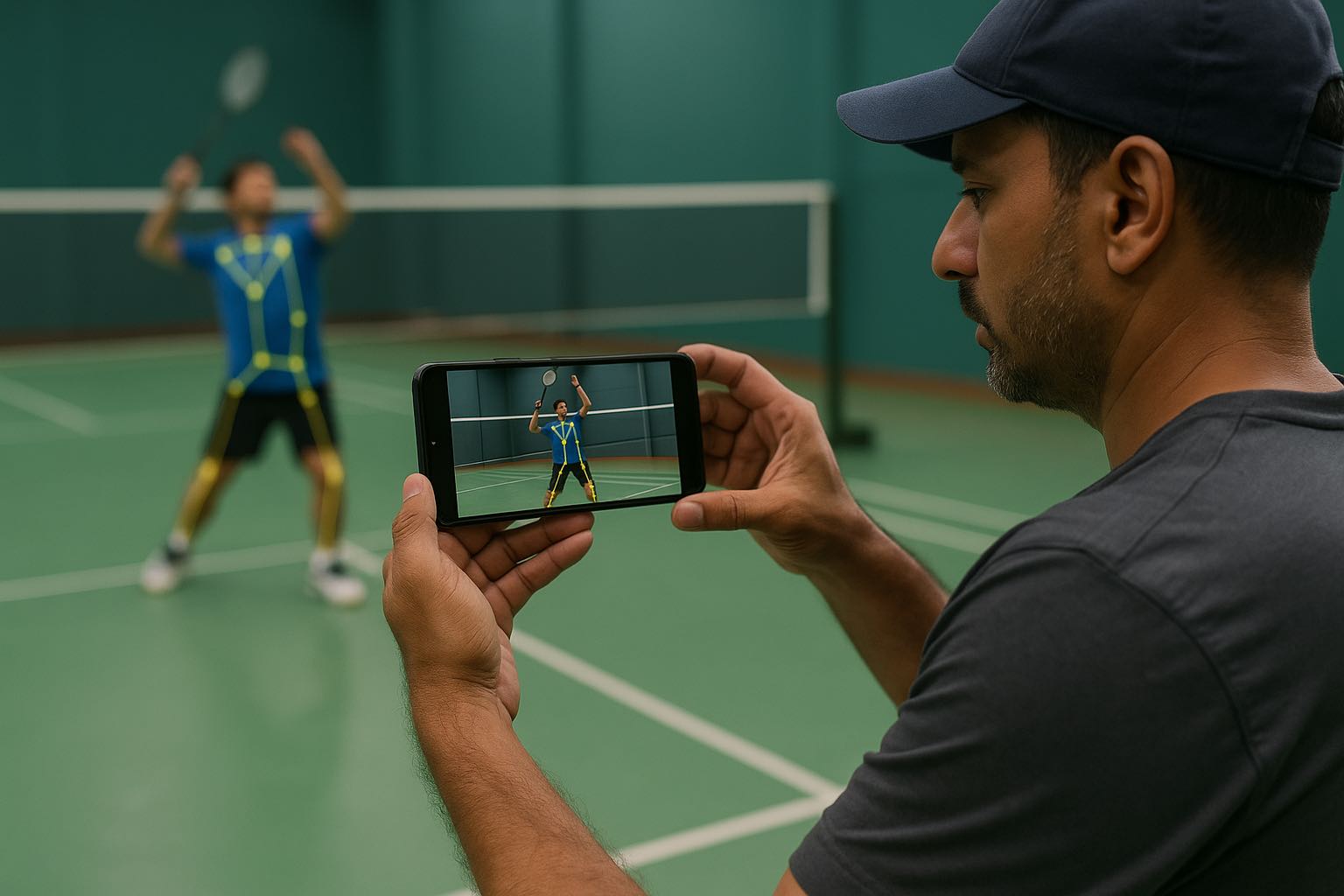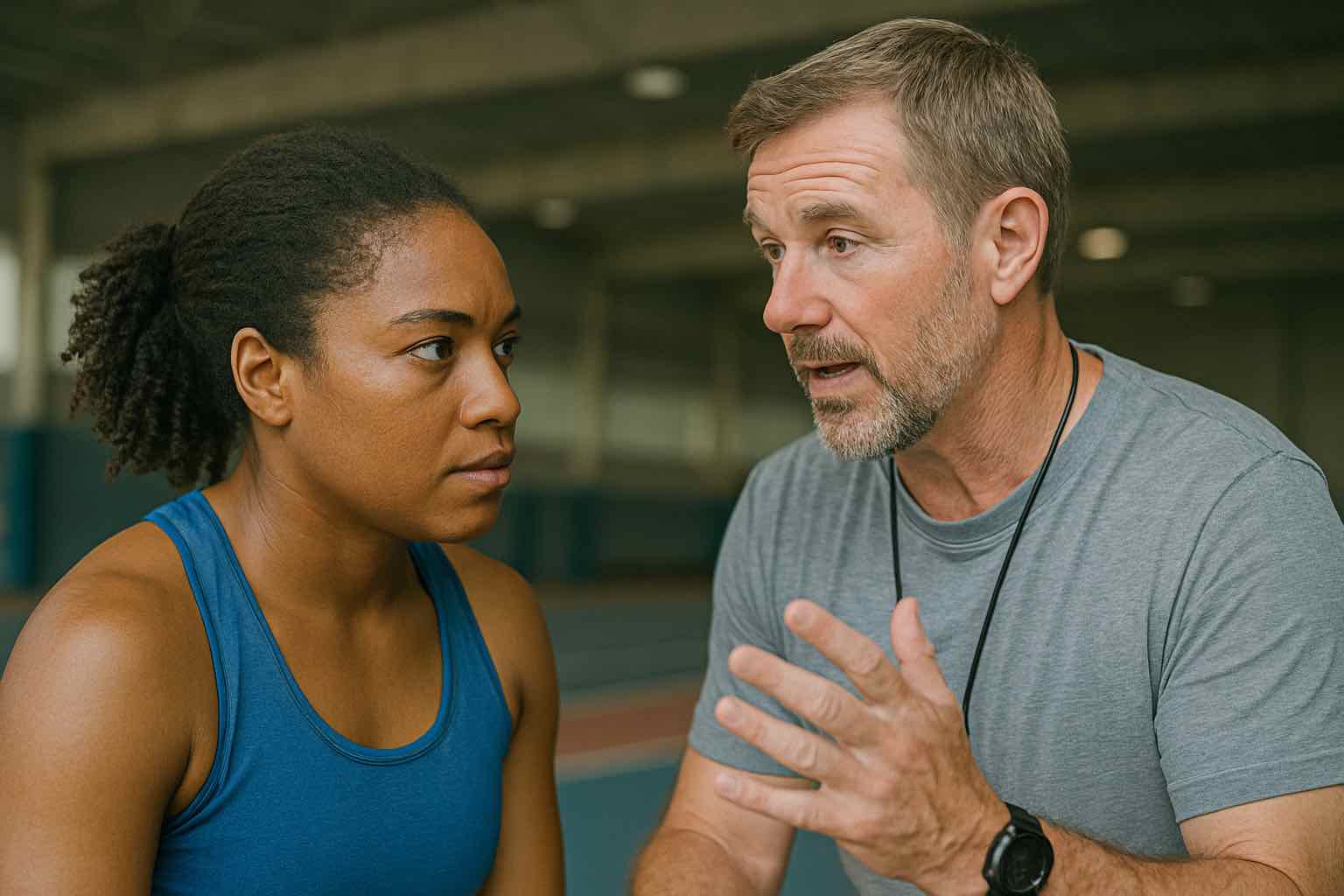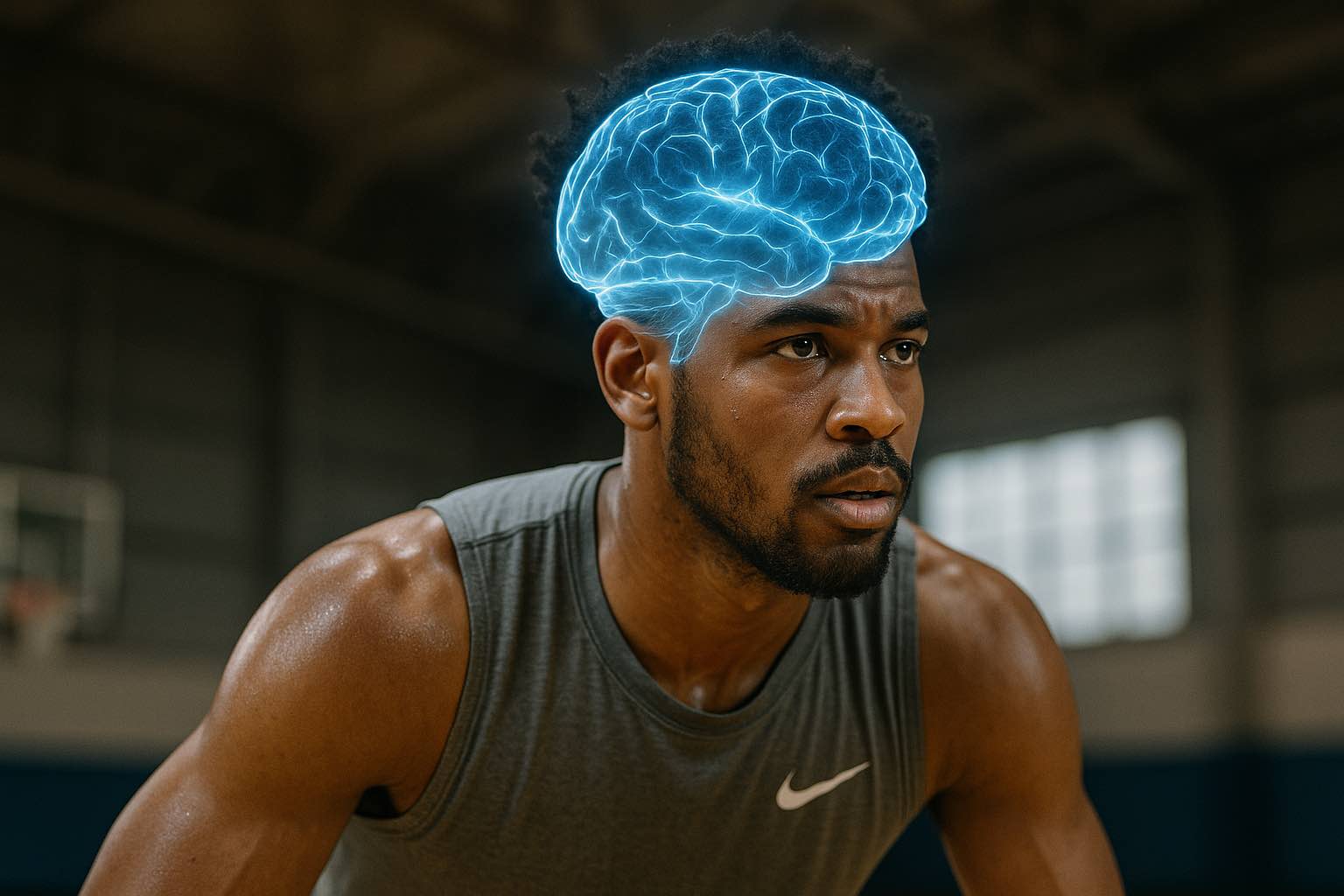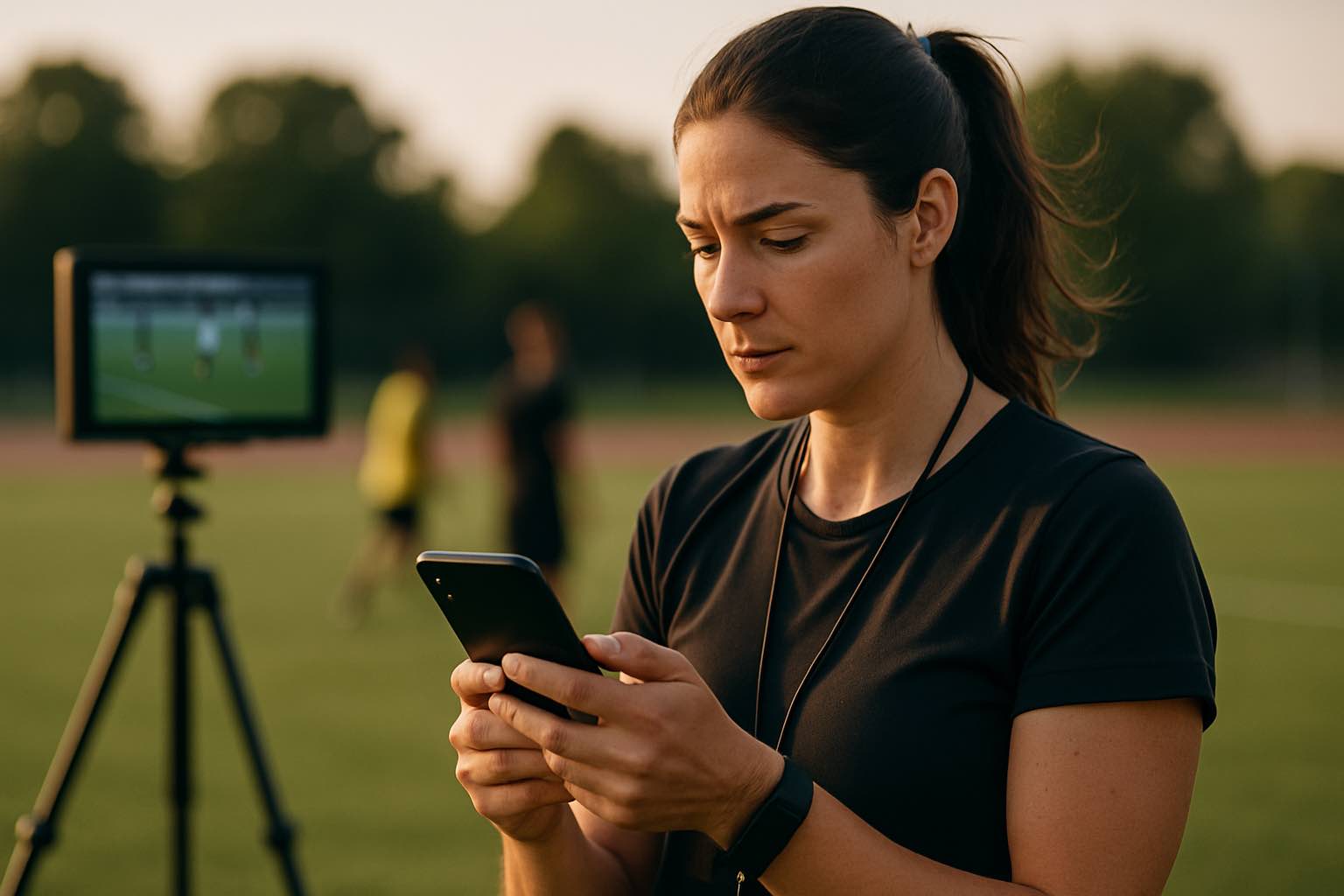The sports coaching landscape is undergoing a remarkable transformation, driven by artificial intelligence and computer vision technology that was once exclusive to elite training facilities. Today, a youth badminton coach in Mumbai can analyze serve techniques with the same precision as an Olympic training center, all through a smartphone app. This democratization of advanced coaching technology is reshaping how athletes develop, train, and perfect their skills.
The Rise of AI-Powered Motion Analysis
Computer vision technology has evolved from requiring expensive motion capture suits and specialized cameras to functioning through simple smartphone cameras. Modern AI systems can track up to 33 key body points in real-time, analyzing everything from joint angles to movement velocity without any wearable sensors.
Take the story of the Barcelona Tennis Academy, which recently implemented AI vision technology across their junior program. Within six months, they reported a 40% improvement in serve accuracy among their young players and a 25% reduction in technique-related injuries. The system automatically identifies biomechanical inefficiencies that even experienced coaches might miss during live observation.
Breaking Down the Technology
At its core, AI vision coaching relies on three key components:
Pose Estimation: Advanced neural networks identify and track human body keypoints, creating a skeletal model of the athlete's movement in real-time. This technology has become so sophisticated that it can distinguish between subtle variations in technique that correlate with performance outcomes.
Motion Pattern Recognition: Machine learning algorithms compare an athlete's movement patterns against databases of professional athletes, identifying deviations and suggesting corrections. The system learns from millions of movement samples, recognizing patterns that predict both success and injury risk.
Predictive Analytics: By analyzing historical movement data, AI can predict potential injuries before they occur. A study at the Australian Institute of Sport found that their AI system could predict hamstring injuries with 85% accuracy up to two weeks before symptoms appeared.
Real-World Success Stories
The Bangalore Cricket Academy transformed their bowling coaching program using AI vision analysis. Coach Raj Kumar shares: "We discovered that 70% of our fast bowlers had a slight shoulder rotation issue that was invisible to the naked eye but was limiting their speed. After AI-guided corrections, our average bowling speed increased by 8 km/h across the program."
Similarly, the German Football Association integrated AI vision into their youth development centers. Their system analyzes over 2,000 training sessions monthly, providing personalized feedback to each player. The result? A 30% increase in technical skill scores among U-15 players within one year.
Accessible Technology for Every Level
| Platform | Cost | Key Features | Best For |
|---|---|---|---|
| MyLift | Free-$20/month | Barbell tracking, velocity-based training | Strength coaches |
| Kinovea | Free | Frame-by-frame analysis, angle measurements | Budget-conscious programs |
| Coach's Eye | $4.99-$299/year | Slow-motion analysis, voice-over tools | Team sports |
| HomeCourt | Free-$14.99/month | Basketball shot tracking, AI feedback | Basketball programs |
| Mustard | $149/year | Baseball/softball pitching analysis | Baseball coaches |
What makes this technology revolutionary is its accessibility. A youth sports club in rural America can now access the same analytical capabilities that were once exclusive to professional teams with million-dollar budgets.
Implementation Strategies for Coaches
Start Small: Begin with one specific skill or technique. The Munich Basketball Club started by only analyzing free throws, achieving a 15% improvement in team free-throw percentage before expanding to other skills.
Create Baseline Measurements: Record every athlete performing key movements at the season's start. This provides objective data for tracking progress and identifying areas needing attention.
Integrate Gradually: Don't overwhelm athletes with data. The Swedish Swimming Federation recommends introducing one new metric per week, allowing athletes to focus on specific improvements without information overload.
Combine with Traditional Coaching: AI vision should complement, not replace, human expertise. Successful programs use technology to validate coaching intuitions and discover hidden patterns, while maintaining the personal connection that motivates athletes.
The Mental Performance Connection
Interestingly, AI vision technology is also revolutionizing mental training. When athletes can see objective visual feedback of their improvements, it builds confidence and accelerates skill acquisition. The Japanese Volleyball Association found that players who regularly reviewed AI-analyzed footage of their performance showed 45% better retention of technical corrections compared to verbal feedback alone.
Visualization, long recognized as a powerful training tool, becomes even more effective when athletes can see precise 3D models of perfect technique overlaid with their own movements. This visual learning approach particularly benefits younger athletes who may struggle with complex verbal instructions.
Future Horizons
The next frontier involves real-time holographic projections and augmented reality coaching. Imagine a tennis player wearing AR glasses that show the optimal racquet path as a glowing trail during practice, or a gymnast seeing their ideal body position projected in their peripheral vision during routines.
Researchers at MIT are developing AI systems that can predict an athlete's peak performance window by analyzing movement quality patterns, potentially revolutionizing how coaches plan training cycles and competition schedules.
Getting Started Today
For coaches ready to embrace AI vision technology, here's a practical roadmap:
- Choose Your First Tool: Start with free options like Kinovea or MyLift to understand the technology
- Focus on One Metric: Pick a single, measurable aspect of performance to track initially
- Educate Your Athletes: Explain how the technology helps them improve, addressing any concerns about being "replaced by robots"
- Document Everything: Create a library of movement patterns for future reference and comparison
- Share Success Stories: Build buy-in by celebrating improvements achieved through AI analysis
The integration of AI vision into sports coaching isn't just about technology—it's about democratizing excellence. When a small-town coach can provide the same quality of technical analysis as an Olympic training center, it levels the playing field and creates opportunities for talent to flourish regardless of geographic or economic constraints.
As we look toward the future, the question isn't whether to adopt AI vision technology in coaching, but how quickly programs can integrate these tools to avoid being left behind. The coaches who embrace this technology today are positioning their athletes for success in an increasingly data-driven sporting world.
[Sources: MIT Sports Lab Research 2024, Australian Institute of Sport Performance Analytics, Barcelona Tennis Academy Case Study 2024, German Football Association Youth Development Report]



